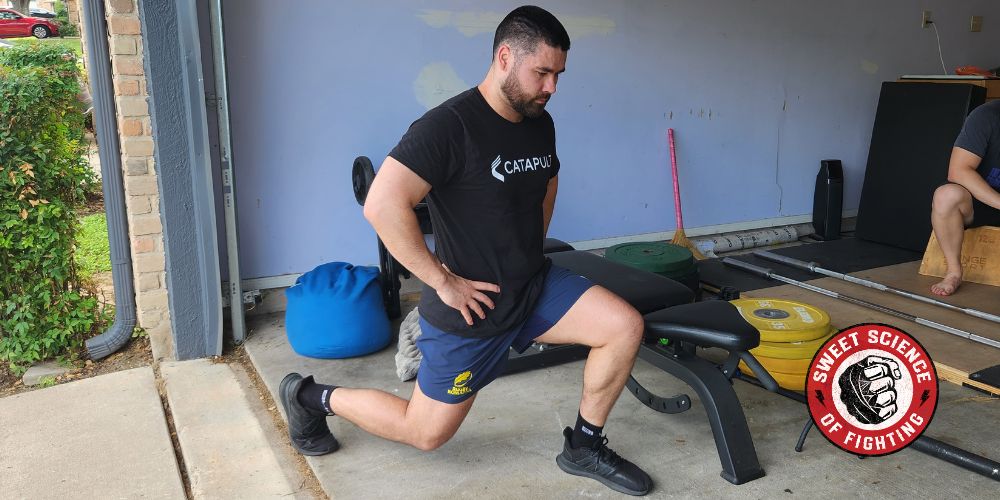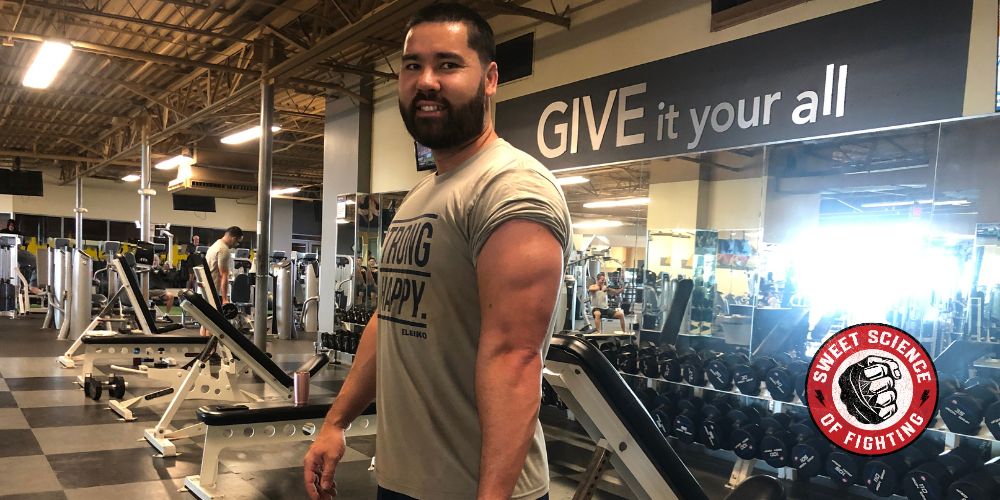Many people make the mistake of taking complete rest when sustaining arm or leg injuries. If you’re aware of the cross-education effect, taking complete rest is counter-intuitive. Training the uninjured side of the body will make the injured side of the body stronger and potentially speed up recovery.
So, what is this phenomenon, and how can it benefit you?
What Is The Cross Education Effect?
The cross-education phenomenon is where training one limb induces strength gains in the opposite limb even though it is not trained [1]. In biomechanical terms, the ipsilateral limb is trained, leading to strength gains on the contralateral limb.
It’s also known as the cross-transfer or cross-training effect. It has been extensively documented as far back as 1894, yet the underlying mechanisms still aren’t understood. However, there is real-world application to training one side of your body and not the other.
What Happens When You Only Work Out One Side Of Your Body?

Many people avoid training only one side of their body when they sustain a niggle or injury thinking they’ll become imbalanced, asymmetrical, and the trained side will become too big and strong at the expense of the injured limb.
That’s just not the case. And training one side of your body will transfer strength to the other. However, there are caveats like with any training protocol. For example, dynamic contractions (eccentric and concentric muscle actions) increase cross-education more than isometric training [1].
Based on pooled data in the latest meta-analysis, concentric-only training through isokinetic devices (single joint exercises performed at a fixed speed) saw a strength increase of 11.3% in the untrained limb.
Eccentric-only training through isokinetic devices resulted in a 15.9% – 17.3% strength increase. Isometric training showed the lowest transfer of 8.2%. Dynamic protocols (eccentric and concentric muscle actions) showed an increase of 15.9% in contralateral strength.
No significant differences were seen between eccentric and dynamic training, indicating either approach is ideal for promoting the cross-education effect [1].
But there’s more nuance to this. When you dive deeper into the literature, you see it’s perhaps not the contraction type that matters the most. It’s that strength gains are made in the trained limb.
Hear me out.
The groups that make the largest gains in strength see the most significant cross-education effect on the untrained limb. For example, when subjects performed 5 weeks of unilateral bicep curls with their dominant arm as a traditional set of 5 x 6 or a cluster set of 30 reps, the greatest increase in 1RM in the untrained limb was in the traditional set group [2].
When looking at 1RM increase in the trained arm, only the traditional set group significantly increased 1RM. We also see this within velocity-specific cross-education effects.
When subjects were split into a fast eccentric or slow eccentric training group, only the fast eccentric group saw strength gains in the untrained limb when performing fast eccentric exercise [3].
They were also the only group to see increased strength in the trained limb at fast speeds. The slow eccentric group saw no significant strength increase and, therefore, did not show a cross-education effect.
This was also demonstrated in a previous study where cross-education was also contraction type-specific [4].
Further, the fast eccentric group did not improve untrained limb strength at slow speeds, showcasing the velocity-specific nature of cross-education.
How Does Cross Education Work?

The underlying cross-education mechanisms are not fully understood. However, the current understanding involves cross-education being an increase in neural drive to the contralateral muscles, increasing strength [5].
Meaning you’re able to better activate the working muscles during certain exercises. Further research suggests there’s a memory retrieval process for the untrained limb to pull from the trained limb with the two brain hemispheres communicating [6].
Regardless, cross-education potentially happens because of neural and not muscular adaptations.
Can You Work One Leg If The Other Is Injured?
You can and should work the other leg if one leg or arm is injured. Taking complete rest is always the worst option regarding limb injuries. In fact, training the uninjured leg or arm may speed up the recovery of the injured side.
Maintaining and improving strength in the injured limb is impossible when it’s immobilized, or you cannot train with any effective load. Being strong helps speed recovery from injury. It’s why you’re led through pre and post-surgery training programs.
But one study indicates how often you should train your uninjured side [7]. It typically takes 12 – 15 training sessions to show increases in strength in the untrained limb.
And this study showed daily training is a faster way to get these strength gains when training the hands and forearms with a hand gripper. Would this be ideal for an injury involving larger muscles?
Potentially, if the work done wasn’t too intense. But if anything, it illustrates when recovering from an injury, you can train more often to speed up the cross-education effect.
Summary
The cross-education effect is real and provides practical implications for training when injured. Don’t take complete rest with an injured arm or leg; train the other side of your body. You’ll transfer strength from the trained side to the injured side.
References
1. Manca, A., Dragone, D., Dvir, Z., & Deriu, F. (2017). Cross-education of muscular strength following unilateral resistance training: a meta-analysis. European journal of applied physiology, 117, 2335-2354.
2. Farinas, J., Mayo, X., Giraldez-García, M. A., Carballeira, E., Fernandez-Del-Olmo, M., Rial-Vazquez, J., … & Iglesias-Soler, E. (2021). Set configuration in strength training programs modulates the cross education phenomenon. The Journal of Strength & Conditioning Research, 35(9), 2414-2420.
3. Farthing, J. P., & Chilibeck, P. D. (2003). The effect of eccentric training at different velocities on cross-education. European journal of applied physiology, 89, 570-577.
4. Seger, J. Y., Arvidsson, B., Thorstensson, A., & Seger, J. Y. (1998). Specific effects of eccentric and concentric training on muscle strength and morphology in humans. European journal of applied physiology and occupational physiology, 79, 49-57.
5. Fimland, M. S., Helgerud, J., Solstad, G. M., Iversen, V. M., Leivseth, G., & Hoff, J. (2009). Neural adaptations underlying cross-education after unilateral strength training. European journal of applied physiology, 107, 723-730.
6. Farthing, J. P., Borowsky, R., Chilibeck, P. D., Binsted, G., & Sarty, G. E. (2007). Neuro-physiological adaptations associated with cross-education of strength. Brain topography, 20, 77-88.
7. Barss, T. S., Klarner, T., Pearcey, G. E., Sun, Y., & Zehr, E. P. (2018). Time course of interlimb strength transfer after unilateral handgrip training. Journal of Applied Physiology, 125(5), 1594-1608.

